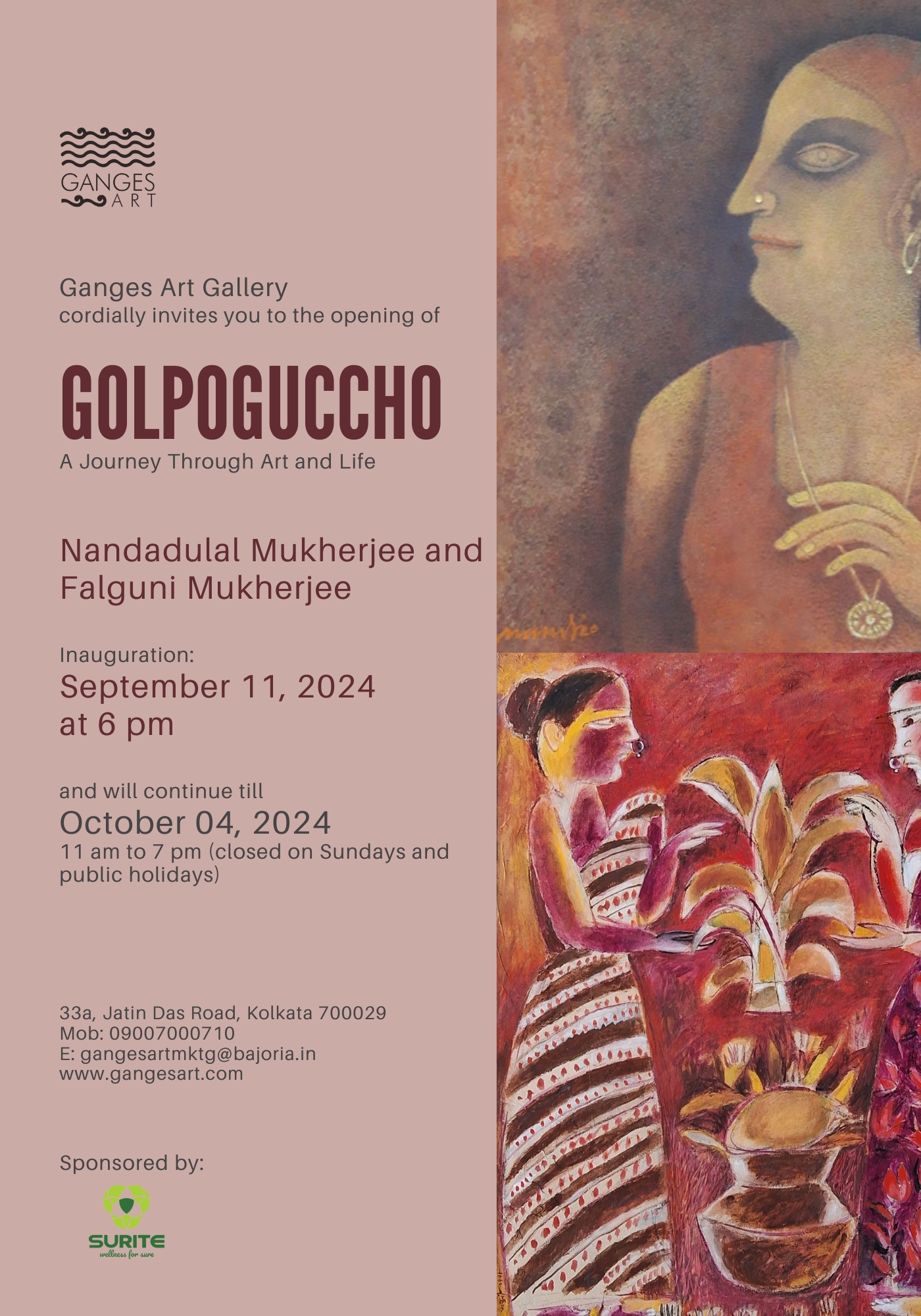
Falguni Mukherjee and Nandadulal Mukherjee are Santiniketan based artists whose artistic sensibilities aesthetic visions are rooted in the cultural history and tradition of that place, with Kala Bhavana as the epicenter. Their creative works and artistic temperaments clearly reflect the ideals they imbibed and acquired from their life in Santiniketan, the community and the landscape. Their works celebrate this aspect, paying a sincere homage to the founding persons of this tradition and the individual mentors.
The founder of Visva Bharati University and the great visionary Rabindranath Tagore had always perceived creative arts and activities located at the center of any educational project. Along with music and other performing arts, fine arts or visual arts and crafts occupied a major position in his pedagogical vision. Establishment of Kala Bhavana in 1919, with Nandalal Bose as one of the most important founding teachers who provided an alternative leadership to this institution, was a significant manifestation of Tagore’s vision. The idea behind this institution was to create a unique art pedagogy where the students would work in proximity with nature, rediscover their own traditional features and aesthetic goals, and make the observation of the life around one of their essential ingredients of art. Kala Bhavana also fostered a holistic art pedagogy which promoted an all-inclusive art practice with an emphasis on the art-design-craft interface without any categorical discrimination.
Thus, the artists trained in Santiniketan show a unique capability to navigate the myriad ways intersecting from one medium to another, deriving subject-matters from the modest visual facts of life and imagining an elevated life of the images, often foregrounding the pure and uncontaminated beauty of living beings. Simultaneously, Santiniketan artists, Nandadulal Mukherjee and Falguni Mukherjee being two prominent among them, have never lost sight of the fact that only an appropriate visual language or a visual idiom can aptly represent the forms of life and nature and express the emotional content of the artists’ responses. In that sense, despite the noteworthy changes in the wake of globalization, the quest for a local yet universally communicable idiom and the stylistic explorations, visible in the art of these artists are still relevant and palpable, aesthetically and conceptually.
Both Falguni Mukherjee and Nandadulal Mukherjee reveal in their artworks their passionate and devout tribute to the traditional methods of Indian painting, such as tempera, gouache and watercolors where the linear definitions of the forms, the rhythmical configurations and emotional temperaments of the compositions underscore themselves as the most significant stylistic features of their works. Carefully composed with a non-obtrusive narrative touch, the motifs in their works assume a poetic elegance, recalling the memory of the past and the beckoning of the future. The simplicity of their imageries adds to that elegance, removing the obscurities and complexities of hyper modern art, at one level. The creative impulse evident in their works are the results of a certain engagement for decades that upheld their values and beliefs firmly.
Truly, they are indebted to their mentors like Ramkinkar Baij and K. G. Subramanyan although the legacy of Nandalal Bose and Benode Behari Mukherjee also left lasting impressions on their works. The natural world around, flora and fauna, the changing moods of nature and the human existence amidst the ever-transforming life forces, seem to have occupied the central themes of these artists. While Falguni Mukherjee emphasizes on the figures of women and their relationships with the ordinary but graceful objects, Nandadulal Mukherjee’s paintings depicts a rather somber thought laced with muted tonalities poised in the infinity of life. Faces for him, are mirrors that reflect the mindscapes. Similarly, all the motifs in their works are not literal representations but chosen flowers from the gardens of their minds, where imagination and the real play an unceasing hide and seek.
Dr Soma Bhowmik
Kolkata